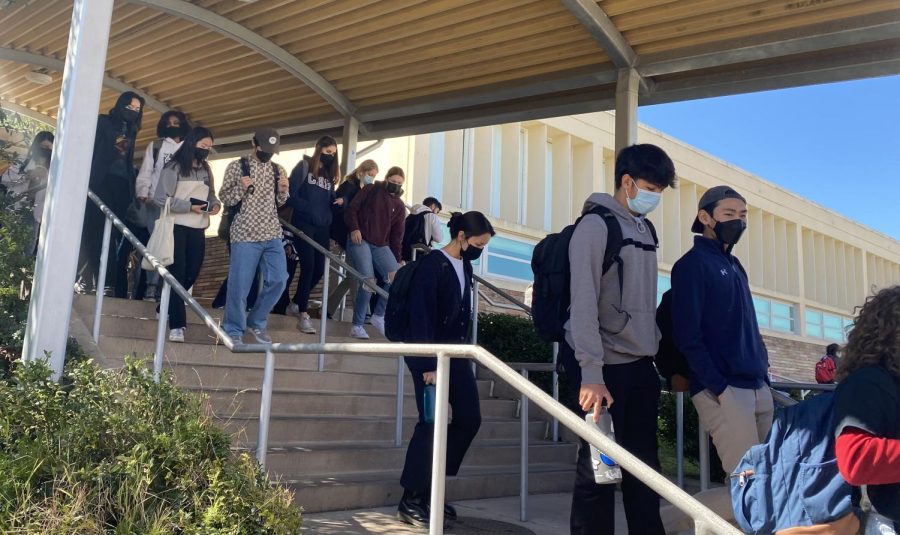The bell rings as students scramble to pack up their backpacks and get out the door to their next class. Despite the seven-minute passing period, many Carlmont students must rush to their next class because of the size of the campus and the sheer amount of stairs and steep slopes. When there is a need for mobility assistance devices, such as crutches, walkers, or wheelchairs, it exacerbates this issue.
There are elevators in many places on campus as an option for students who cannot take the stairs, but sometimes the elevators are broken, usually with no signage to mark them as so. There are still places on campus where the only option is the stairs unless students want to take a slower way, making them exceedingly late.
As of the 2018 campus map, there are only two wheelchair-accessible ramps on the Carlmont campus. There is also the ramp that runs from B hall up to E hall, but it is nowhere near accessible. Walking up the steep incline on crutches is a hardship, and you are sure to fall on your face walking down. It is hard to imagine maintaining a safe speed going up or down that ramp in a wheelchair.
There are also many uneven pathways on campus where you can see past Carlmont students’ engravings into the pavement. While this is a fun piece of school history, these pathways are not ideal for students whose crutches, walkers, or wheelchair wheels may get stuck in the rough divots in the concrete. The sheer number of students on campus also makes it challenging to need mobility assistance because it is common to be tripped or bumped when walking between classes. Friendly students offering to help only make you feel like an obstacle.
My experience using crutches on campus was horrible and frustrating. I remember one day when I had to get from the quad all the way to upper D hall, and I was so exhausted after attempting to climb one flight of stairs that I wanted to give up entirely. Only with encouragement from a teacher was I able to make it to class on time.
Carlmont’s campus accessibility could be better all around. Article 4, Section P of Title Five of the California Code of Regulations states that “schools shall comply with standards established by the American Disabilities Act,” which includes “making existing facilities used by [students] readily accessible and usable by individuals with disabilities.” Bumpy pathways, steep ramps, and broken elevators make maneuvering around campus exceedingly difficult for students without a full range of motion. This issue is a side effect of the school being built into a hill combined with poor planning. The only thing we can do is keep our spirits high amidst adversity.






















